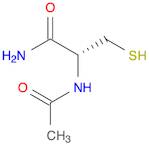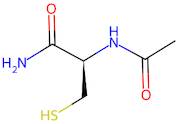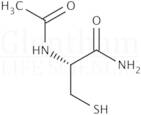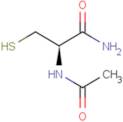CAS 38520-57-9: N-Acetylcysteine amide
Description:N-Acetylcysteine amide (NAC amide) is a derivative of the amino acid cysteine, characterized by the presence of an acetyl group attached to the nitrogen atom of the cysteine side chain. This compound is known for its antioxidant properties, which are attributed to its ability to replenish intracellular levels of glutathione, a critical antioxidant in the body. NAC amide is often studied for its potential therapeutic applications, including its role in protecting against oxidative stress and inflammation. It is soluble in water and exhibits stability under various pH conditions, making it suitable for various formulations. Additionally, NAC amide is considered to have a lower odor compared to its parent compound, N-acetylcysteine, which can enhance its acceptability in certain applications. Research into its pharmacological effects suggests potential benefits in respiratory health, liver protection, and neuroprotection, although further studies are needed to fully elucidate its mechanisms and efficacy in clinical settings.
Formula:C5H10N2O2S
InChI:InChI=1S/C5H10N2O2S/c1-3(8)7-4(2-10)5(6)9/h4,10H,2H2,1H3,(H2,6,9)(H,7,8)/t4-/m0/s1
InChI key:InChIKey=UJCHIZDEQZMODR-BYPYZUCNSA-N
SMILES:O=C(NC(C(=O)N)CS)C
- Synonyms:
- (2R)-2-(Acetylamino)-3-mercaptopropanamide
- (2R)-2-Acetamido-3-sulfanylpropanamide
- (R)-2-Acetamido-3-mercaptopropanamide
- N-Acetyl-<span class="text-smallcaps">L</span>-cysteinamide
- N-Acetyl-L-cysteinamide
- N-Acetylcysteine amide
- Propanamide,2-(acetylamino)-3-mercapto-, (R)-
- Propanamide, 2-(acetylamino)-3-mercapto-, (2R)-






























